Adult MTM Models for Children Could Improve Medication Costs, Effectiveness
Researchers investigate annual medication costs for children and determine which of them would qualify for medication therapy management based on CMS thresholds.
Adolescents with high polypharmacy and complex medical issues may benefit most from adult models of medication therapy management (MTM), according to a study published in JAMA Network Open.1 Exploring adult MTM models and their potential among youth populations, researchers determined that Medicare benefits like MTM have a chance to significantly improve the effectiveness, safety, and cost of children’s medications.
“For adults, MTM programs are provided free to Medicare beneficiaries who exceed an annual prescription cost threshold,” wrote the authors. “MTM consists of a pharmacist-led comprehensive medication review, medication optimizations, and creation of a medication action plan.”
The Centers for Medicare & Medicaid Services (CMS) introduced MTM in 2006, and it has seen immense growth in the past 20 or so years. According to a study published in American Health & Drug Benefits, the biggest changes to CMS’ Part D MTM program came in the years 2010, 2013, and 2016.2
“Low beneficiary enrollment rates in the Medicare Part D MTM program led CMS to lower thresholds required for eligibility to expand the beneficiary pool,” wrote the authors. “More prescriptive MTM service requirements enhanced service standardization. Despite these changes, MTM enrollment and comprehensive medication review rates remain low, likely, in part, from a lack of financial incentives.”
READ MORE:
Researchers of the current study identified that MTM indeed improves patient safety and affordability despite being widely underutilized among the adult population.1 While CMS has yet to establish an MTM model designed for adolescent medication use, the researchers wanted to determine for themselves how children would benefit from an MTM service.
To do this, researchers first explored the overall annual outpatient prescription medication use and costs among children and which of them would qualify and benefit most from MTM services based on the CMS threshold. “We conducted a cross-sectional study of youths aged 1 to 21 years who were prescribed 1 or more medications in the 2022 Colorado All Payer Claims Database,” they wrote.
They identified participants’ polypharmacy rates based on concurrently used medications and their annual medication costs calculated based on manufacturer prices at the pharmacy. Researchers also separated each medication into a specific class and assessed the medical complexity of each adolescent patient included in the analysis.
A total of 529,055 children (mean age, 10.9 years; 51% female) prescribed at least 1 medication were identified and included in the analysis. Among the study population, researchers identified a total of $1.1 billion in medication expenditures. Of those expenditures, 47% were for patients experiencing high polypharmacy rates, taking at least 5 prescribed medications simultaneously.
“Five percent (26,386) of patients exceeded the cost threshold for MTM; associated factors were older age (13-21 years vs 2-8 years), having more [complex chronic conditions], higher inpatient visit counts, and higher outpatient visit counts,” according to authors of the study.1
As explained in definitions of MTM and CMS’ preliminary reasoning behind its introduction, MTM services are best utilized for patients prescribed and taking a significant number of medications. With children from Colorado as a prime example of MTM utilization, there was a need to introduce MTM services geared toward adolescents. While it was just a small subset of the population, CMS’ MTM services showed they may provide significantly improved health outcomes among younger patients.
However, CMS eligibility requirements and cost thresholds are constantly changing to better facilitate the Medicare Part D population. “The goal of these changes is ‘to promote consistent, equitable, and expanded access’ to MTM. On April 5, 2024, CMS issued a final ruling on the proposed changes in MTM eligibility criteria that will take effect starting in 2025,” according to authors of a study published in JAMA Health Forum.3
Amid continuous changes to CMS rulings and a growing population of polypharmacy-reliant children and adults, the need for MTM services may only increase going forward. However, experts will continue to keep an eye on these ongoing trends in order to ensure the cost-effectiveness of government health care programs such as Medicare. Expanding MTM access, according to the authors, may have population-wide impacts on children and adolescents.
“Pediatric health care systems and payers should prioritize pharmacist-led pediatric MTM for the highest-need patients, possibly targeted by diagnosis,” concluded the authors.1 “Adapting adult models for shared or virtual MTM services could improve effectiveness, safety, and cost of medication regimens for children and youth.”
READ MORE:
Ready to impress your pharmacy colleagues with the latest drug information, industry trends, and patient care tips? Sign up today for our
References
1. Begum A, Hosokawa P, Orth LE, et al. Annual medication use and costs among children. JAMA Netw Open. 2025;8(3):e251529. doi:10.1001/jamanetworkopen.2025.1529
2. Gray C, Cooke CE, Brandt N. Evolution of the Medicare Part D medication therapy management program from inception in 2006 to the present. Am Health Drug Benefits. 2019 Sep;12(5):243-251.
3. Hung A, Wilson L, Smith VA, et al. Comprehensive medication review completion rates and disparities after Medicare star rating measure. JAMA Health Forum. 2024;5(5):e240807. doi:10.1001/jamahealthforum.2024.0807
Newsletter
Pharmacy practice is always changing. Stay ahead of the curve with the Drug Topics newsletter and get the latest drug information, industry trends, and patient care tips.






































































































































